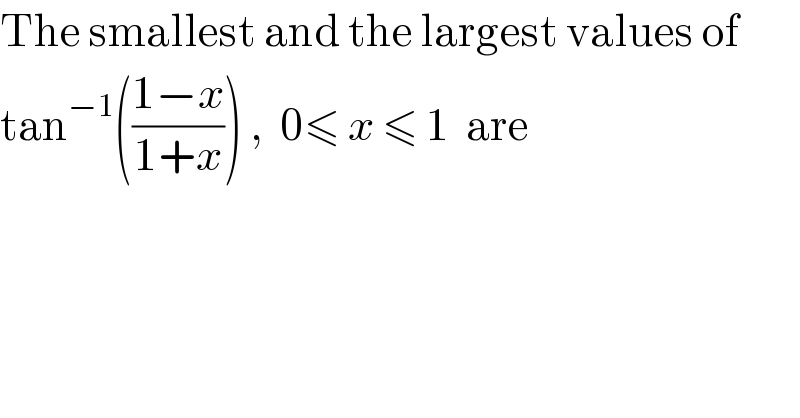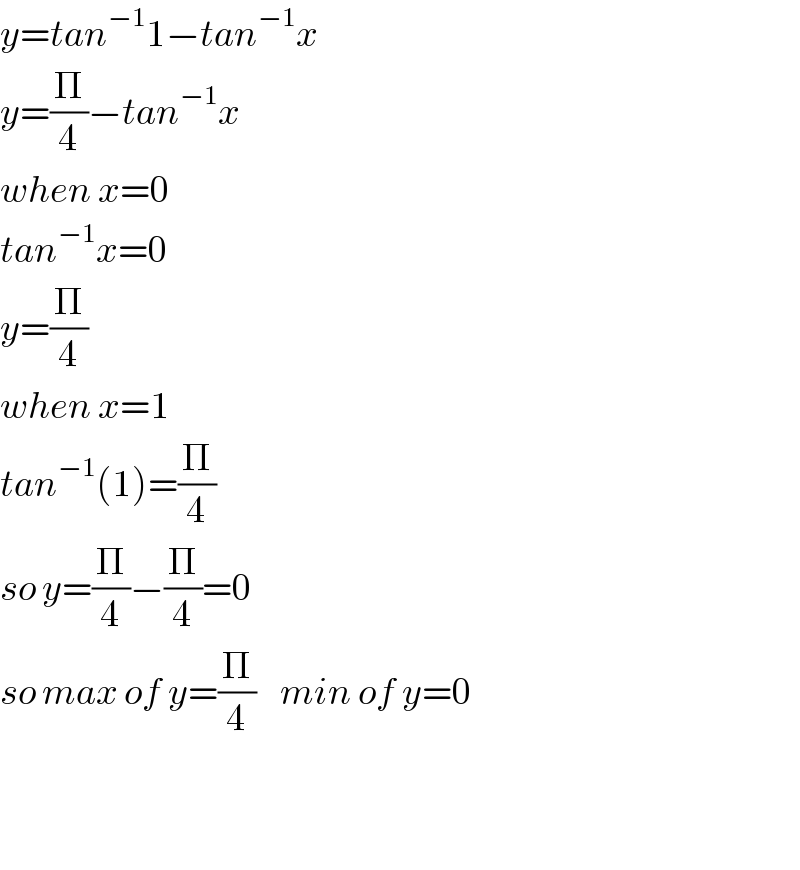
Question and Answers Forum
Question Number 43180 by gunawan last updated on 08/Sep/18

Commented by maxmathsup by imad last updated on 08/Sep/18
![let ϕ(x)=arctan(((1−x)/(1+x))) with x∈[0,1] changement x =cosθ give ϕ(x)=ϕ(cosθ) =arctan(((1−cosθ))/(1+cosθ))) =arctan( tan^2 ((θ/2))) we have 0≤x≤1 ⇒0≤θ≤(π/2) ⇒ 0≤tan((π/2))≤1 ⇒0≤tan^2 ((θ/2))≤1 ⇒ 0≤ϕ(cosθ)≤(π/4) ⇒ ϕ(x)∈[0,(π/4)](both function tan and arctan are increasing)](Q43242.png)
Answered by tanmay.chaudhury50@gmail.com last updated on 08/Sep/18

Commented by gunawan last updated on 08/Sep/18

